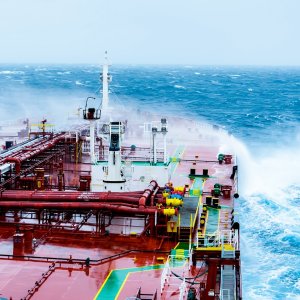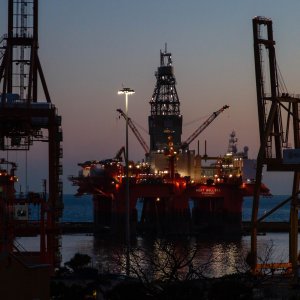
Field Profile: Perdido
Perdido is the deepwater region, located approximately 180km east from the coast of Tamaulipas, where PEMEX made its first deepwater deepwater oil discoveries. PEMEX acquired geological data of 500,000km2 surrounding the Perdido area before characterizing the two sectors of this region: the Perdido Fold Belt to the east and the Subsalt Belt area to the west. After identifying the presence of high quality hydrocarbons in formations with very good permeability and porosity throughout several stratigraphic horizons, PEMEX decided to drill the Trion-1 well located 39km south from Mexico’s maritime border with the US in the Subsalt Belt. It was the first deepwater discovery of light oil for PEMEX, representing 350 to 500 million boe of 3P reserves. Schlumberger played a key role in this discovery, by being heavily involved in providing services to prove the existence of the reserves and in the actual drilling process. The next well to be completed was Supremus-1, which became PEMEX’s second commercially successful deepwater oil well following the discovery of around 75 to 150 million boe of 3P reserves. Supremus-1 was originally drilled to obtain information to better design deeper wells such as Maximino-1, but resulted in the discovery of Oligocene and Miocene reservoirs with light oil. The importance of these two wells is not only attributed to the discovery of oil reserves but also to the evidence of reservoirs that could add up to 13 billion barrels of oil, according to PEMEX’s estimates.
Following the unexpected oil discovery at Supremus-1, drilling operations started in December 2012 at Maximino-1, referred to as the jewel in the crown of Mexico’s deepwater portfolio. Located about 320km east off Mexico’s northeastern shore, within the Perdido Fold Belt, Maximino-1 was the deepest well ever drilled by PEMEX in a water depth of 2,919m. The reservoir tapped by this well lies within the Early Eocene Wilcox formation, which is already being exploited in Texas. Initial production was 3,796b/d of light oil and 15mcf/d of gas, and the reservoir is expected to hold the largest amount of 3P reserves among PEMEX’s deepwater discoveries. Vespa-1 resulted in a heavy oil discovery in a Middle to Late Miocene reservoir and yielded initial production of 2,366b/d and 2.3mcf/d. Exploratus-1 also struck heavy oil in an Early Oligocene formation at 3,600m beneath the sea floor. The deepest and most recent well drilled by PEMEX before Exploratus-1, PEP-1, was unsuccessful. So far, PEMEX has drilled 31 wells in deepwater, including three delineation wells, with a commercial success rate of 55%, which is superior to the 33-35% average success rate that companies have achieved on the US side of the Gulf of Mexico. As of today, PEMEX has over 55 prospects identified in the area, creating opportunities for joint ventures to accelerate deepwater developments to tap into these significant hydrocarbon-bearing formations. Moreover, the recently drilled Trion-1DL is a delineation well that is expecting to confirm additional reservoirs in the area. In relation to PEMEX’s deepwater oil discoveries, the Perdido project in the US part of the Gulf of Mexico is currently the most technologically advanced ultradeepwater project in the world. Developed by Shell in collaboration with partners BP and Chevron, it is located 354km away from Galveston, Texas, and sits very close to the Mexico-US maritime border. The project comprises a spar production facility, which exploits three fields: Great White, Silvertip, and Tobago. All three are located in the Perdido Fold Belt in the northwest section of the Alaminos’ Canyon outer continental shelf. The water depth in the region ranges from 2,300m to 3,000m, some of the deepest waters in the Gulf. Production began at the end of March 2010 from five wells at the Great White field, with all wells expected to come online by 2016 and produce 100,000b/d and 200bcf/d. The total cost of the project is estimated at around US$4 billion.
The similar geological characteristics of the US and Mexico’s Perdido region open up the prospects of collaboration between companies on both sides of the border. US companies might also feel compelled to come to Mexico and use the expertise they have acquired in the US side of the border to participate in exploration, development and production projects in Mexico’s Perdido Fold Belt.

















